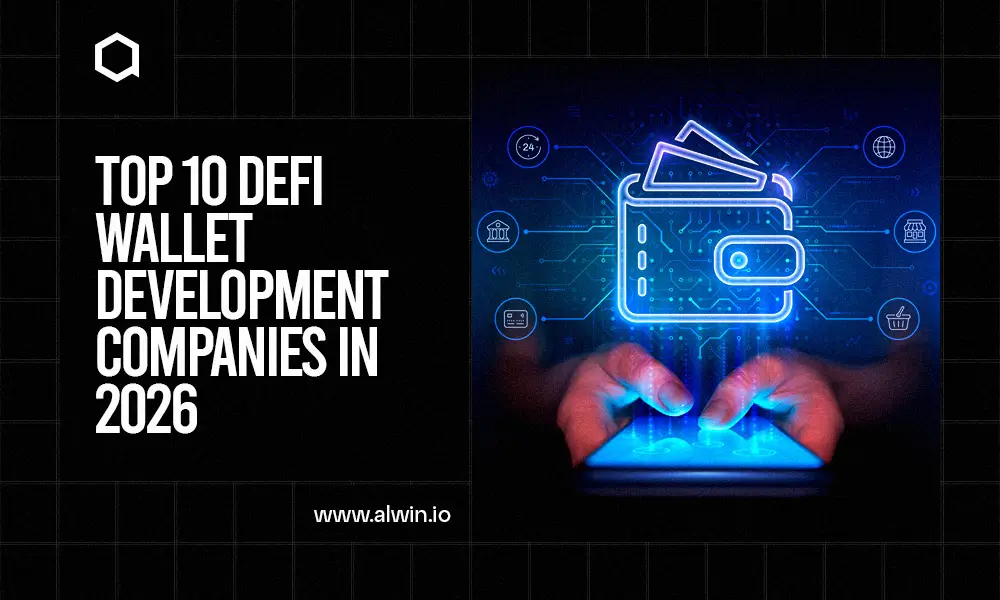The next generation of trading technology is reshaping how people and businesses handle digital assets. Markets now move faster, generate more data, and respond instantly to global events, making traditional manual methods harder to rely on. As a result, there is a rising need for intelligent systems that deliver speed, accuracy, and consistent performance.
Reports show that advanced trading technologies were valued at $22.3 billion in 2025 and are projected to grow to $50.4 billion by 2033, highlighting a strong shift toward smarter tools that help traders navigate a rapidly changing market.
As a leading cryptocurrency exchange development company, Wealwin delivers next-generation crypto trading platforms built to meet these modern demands. Our solutions provide real-time insights, automated execution capabilities, and a reliable foundation for businesses aiming to scale in the digital asset space.
In this blog, we highlight the pivotal role of advanced intelligence in shaping next-generation crypto trading platforms. You will gain a clear view of how these systems strengthen decision-making, improve responsiveness, and set a new benchmark for the future of digital asset trading.
Understanding the Impact of Advanced Artificial Intelligence in Crypto Trading
Artificial Intelligence plays a clear role in trading by helping traders understand the market faster and more accurately. Markets move quickly, and it is difficult for anyone to follow every change in real time. AI tools step in to handle data-heavy tasks, spot useful signals, and support traders with information they might miss on their own.
In trading, AI refers to systems that study price movements, analyse live market conditions, and use model-based predictions to identify potential opportunities. These tools do not replace human decision-making; they strengthen it by providing a clearer view of what is happening in the market.
Because trading involves many moving parts, “AI in trading” includes different types of tools. This can range from scanners that monitor price changes to pattern-recognition systems, sentiment trackers, and risk-management models. Each tool helps traders stay organized, react quickly, and make more informed decisions.
The Changing Landscape of Crypto Trading
Markets move faster than ever, with prices shifting in seconds and opportunities appearing at any moment. Traders now operate in a space that runs nonstop, making it harder to react using traditional methods.
Because of this speed and complexity, modern trading has become more dynamic and competitive. Platforms depend on stronger insights and quicker execution to help users keep up with constant market changes. What once felt new or advanced has now become standard, giving everyday traders access to tools that support clearer, faster, and more confident decisions.
In this changing landscape, success depends on speed, clarity, and well-timed decisions. Traders expect platforms that guide them, simplify complexity, and make the fast-moving world of digital assets easier to navigate.
What Does “AI” Mean in the Context of Crypto Trading Platforms?
This technology refers to smart systems that study large sets of market information, spot repeating patterns, and act on them with precision. These systems often power automated trading tools that review price charts, check sentiment across the market, and evaluate key signals in real time.
Because they process data quickly and consistently, they can make trading decisions without hesitation or emotional influence. This helps traders react faster, trade more efficiently, and stay aligned with market momentum.
Key Functions in Modern Crypto Trading Systems
Automated trading - Smart trading tools can place buy and sell orders around the clock, following predefined rules and responding to live market movement without delay.
Data analysis - These systems can scan large volumes of market information quickly, uncovering patterns and signals that may be difficult for a human trader to notice in time.
Market forecasting - By studying past price behavior and current trends, they can estimate potential market direction and support faster, more informed decisions.
Sentiment tracking - They can review discussions, news, and social signals to understand the overall market mood and use that insight to refine trading actions.
Risk control - Built-in rules help manage exposure with precise timing, reducing the chance of sudden losses during sharp market swings.
Strategy adjustment - Unlike basic tools that follow fixed rules, advanced systems can fine-tune their approach as new market data appears, helping traders stay aligned with changing conditions.
How Do AI-powered Mechanisms Work in Crypto Trading?
Advanced trading systems rely on automated logic, mathematical models, and continuous data analysis to evaluate markets, execute decisions, and adapt to changing conditions. These mechanisms can process enormous datasets, identify patterns, and respond far faster than manual methods. They work through several core functions
1. Real-Time Data Processing
These systems constantly scan live market feeds, price movements, order books, volume trends, and external signals. By comparing incoming information with predefined conditions, they determine when the market is shifting and what opportunities may be emerging.
2. Pattern Recognition and Forecasting
Automated engines evaluate historical behavior and current movement to identify recurring patterns such as breakouts, momentum shifts, or consolidation phases. This helps estimate potential price direction and prepare strategies before major changes occur.
3. Rule-Based Decision Making
Every action is guided by a clear set of rules. Once a condition is met, such as a specific price crossing a threshold or a volatility spike, these systems trigger buy, sell, or hold decisions without hesitation. This eliminates emotional influence and enforces discipline.
4. Speed and Precision in Execution
The moment a qualifying setup is detected, trade execution happens within fractions of a second. This rapid action helps capture narrow windows of opportunity that human traders may miss, especially during fast-moving market cycles.
5. Continuous Strategy Optimization
Performance data from past trades is reviewed to refine rules, adjust thresholds, and sharpen model accuracy. This ongoing tuning offers the mechanismthat evolves alongside shifting market conditions.
6. Risk Control and Safeguards
Built-in safety features such as stop-loss limits, exposure caps, and capital protection rules ensure the system operates within defined risk boundaries. This keeps portfolios protected even during volatile conditions.
Futures of AI Crypto Trading Platforms
Predictive analytics
Advanced systems review large volumes of information, including on-chain activity, market sentiment from social platforms, and historical price behaviou,r to generate real-time signals and estimate likely price directions.
Automated strategy execution
Trading engines place orders based on these signals, following predefined rules for entry and exit. This supports continuous, high-speed execution without hesitation or emotional influence.
Sophisticated risk management
Modern platforms handle the increased risk that comes with leveraged futures. They adjust stop-loss and take-profit levels automatically as volatility changes, helping traders protect their capital.
Adaptive strategies
Evolving models refine their methods over time, learning from shifting market conditions to remain effective even as trends and liquidity patterns change.
The Advantages and Limitations of AI Technologies in Trading
The application of advanced analytical technology in trading introduces a range of notable advantages, while also presenting specific operational challenges. These systems can process high volumes of market information in a very short time, enabling faster and more informed decisions.
- Traders and investors can react quickly to changing market conditions, as automated tools continuously monitor data flows.
- Advanced analytics support the creation of well-structured strategies that align with risk-management principles and defined investment objectives.
- Such technologies help identify optimal entry and exit levels, allowing users to open and close positions with greater confidence.
- They are particularly effective in automated and rules-based trading environments.
However, some limitations and risks must be considered:
- These systems perform well only when they receive complete and accurate information. If the underlying data is flawed or biased, the resulting calculations and recommendations will be unreliable.
- Trading platforms built on these technologies are common targets for cyber threats. Without strong security measures, users may face intrusions, data breaches, or operational disruptions.
- Another challenge relates to the system’s behavioral patterns. If it relies solely on historical information, it may fail to adapt to new market conditions or unexpected events, making the output less relevant over time.
Conclusion
Artificial Intelligence is becoming a foundational element of next-generation crypto trading platforms. By processing vast volumes of data in real time, identifying subtle patterns, and automating complex trading decisions, AI elevates both the speed and precision of market participation. It supports traders with improved strategy development, more disciplined risk management, and continuous execution without emotional bias.
As the digital asset ecosystem continues to expand, AI-driven capabilities will play an increasingly central role in helping traders navigate volatility, capitalize on opportunities, and maintain a competitive edge in an ever-evolving market landscape. Partnering with an experienced AI development company empowers businesses to integrate these intelligent capabilities more effectively, ensuring they stay ahead in a rapidly advancing technological era.



